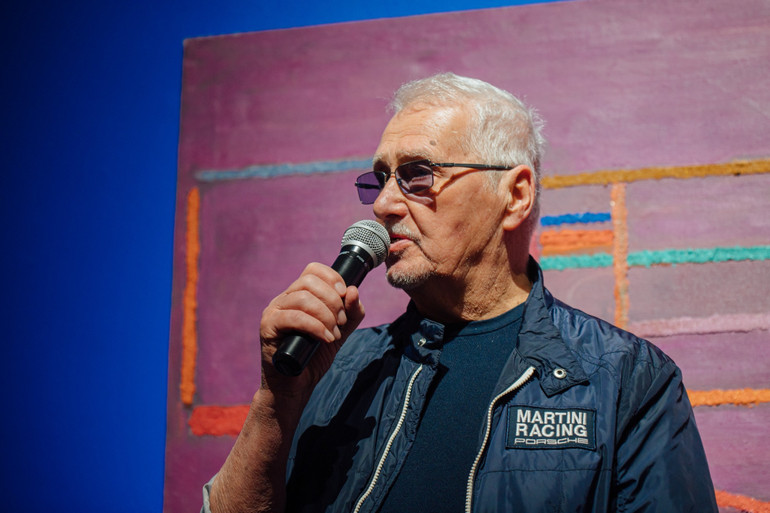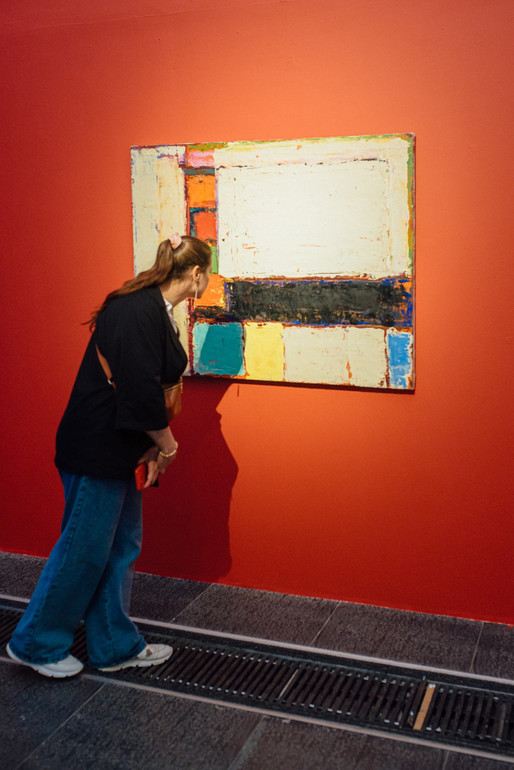The most expensive Ukrainian artist Anatoly Kryvolap – exhibition in Kyiv
[ad_1]
Abstraction requires careful attention to color, shape, and texture. Such works often seem easy to reproduce or copy, but require well-developed associative thinking and the ability to “feel” the material.
Anatoly Kryvolap for a long time I was looking for a form that was interesting and optimal for creating my own paintings. This process was not easy, but it was consistent.
Now we can enjoy this form too, having seen the works in the capital’s Center of Contemporary Art M17 until June 9.
“At the age of 22, I knew that I would be an abstract artist. I saw some kind of abstraction, and so did I everything went cold, pierced…” So says Anatoliy Kryvolap, whose active creativity fell on the 90s and early 2000s. Already in 2011, his works will twice set the world record for sales of contemporary Ukrainian art on the international art market.
“Primitives” in M17 is the first exhibition that combined Kryvolap’s abstract works from the 90s and 2000s with icons created last year. They occupy two floors of the Center and coexist successfully in a space with high ceilings and colored monochromatic walls.
Exhibition “Primitives”
M17 Contemporary Art Center
Abstraction for Crookpaw is not only an attempt to explore forms, colors or materials, but also a breath of air after the suffocation of socialist realism. Studying at the faculty of painting at the Kyiv Art Institute, the artist does not want to follow the path of a single direction in the Soviet era and for 15 years after graduation leads a private lifestyle, searching for himself and the method in which he will be comfortable creating.
Valery Sakharuk, curator of the “First-Types” exhibition, recalls the story of Anatoly Kryvolap from a conversation with the artist: “I decided to make an evening, I started to write the house in orange, I sat my grandfather down. Wrote, wrote, I see – such nonsense. I don’t know what hit me. Took gilding across the sky, and where the earth remained, left segments of red, blue, green“. In general, many creative discoveries come as a surprise for Anatoly himself, and his “pure art” is also pure joy for an artist who does not just work, but searches. Art turns out to be a journey in which point B is not visible.

Anatoly Kryvolap
M17 Contemporary Art Center
Most of Kryvolap’s works do not have a title or sound like “Composition”, “Horizontal composition”, “Structure”, naming numerous clusters of forms and figures. It is on them that he seeks to focus the attention of the audience, therefore the names are as pragmatic as possible.
In “Composition” you can see the silhouettes of playgrounds with slides and swings. In “Horizontal composition 2” there are brick houses, which instead of the usual terracotta or pale orange ones become red, purple, pink. However, the vision will always be different – in “Structure” for someone, colored trains accumulate, for someone – bookshelves, for another – the foundation of some building.

Anatoly Kryvolap. “Composition” (2001)
M17 Contemporary Art Center
On “Twilight Chord” we can see a dark band surrounding the bright colors in the picture. From white, which is the most on the canvas, all the other colors seem to emerge: red, orange, green, yellow, pink – and combine into the same “twilight chord”.
In the earlier paintings – “Untitled” (1986), “Diptych” (1995) – a careful attitude to color and the placement of figures on the canvas can be seen. Especially in the first work, where the rectangles appear one after another and are arranged in a clear sequence, forming a three-dimensional space.

Anatoly Kryvolap’s exhibition opened in M17
M17 Contemporary Art Center
All these works visually lead to the center, where the icons created by Kryvolap last year are placed. In the same year, Kryvolap finished working on the frescoes of the Church of the Intercession of the Holy Virgin in the village of Lypivka in the Kyiv region, which was first destroyed by the Soviet authorities, and then shot by the Russians at the beginning of a full-scale war. The artist creates icons in his own style, paying tribute to bright, saturated colors and the simultaneous use of several materials.
We see the “Angels” – their wings and clothes seem fragmentary due to the mosaic background and sharp, straight strokes. The saints are facing each other either doubting something or asking for advice. Crooked-paw angels do not resemble traditional images of saints, because the emotionality of the former is deeper.

Anatoly Kryvolap. “Angel” (2023)
M17 Contemporary Art Center
One of the “Angels” is placed facing the viewer in profile, with one foot off the ground, with raised hands. He seems to be dancing. There are two “Angels” sitting on their knees and talking. Sometimes their outfits resemble traditional Ukrainian costumes with embroidered shirts, colored belts and headdresses.
On the second floor, there are smaller paintings, but still rich in bright, expressive colors. It seems that if you turn off the lights, all the robots will glow in the dark.

It seems that if you turn off the lights, Crookpaw’s robots will glow in the dark
M17 Contemporary Art Center
Most of the works from the series “Ukrainian Motif” (2008) are located here. The series itself conveyed the feeling of a person who moved from the metropolis to the village. On the canvases – a bright sunset, lakes, houses above which the moon shines. These paintings have a lot of nostalgia and a sense of home, which is why they are smaller, because they show something intimate, intimate, expensive.
Crookpaw’s canvases are a constant interaction of the color, which the artist diligently searched for and researched, and the material through which this color is manifested. If for theologians God is the archetype, then for artists, perhaps, it is color?
[ad_2]
Original Source Link











